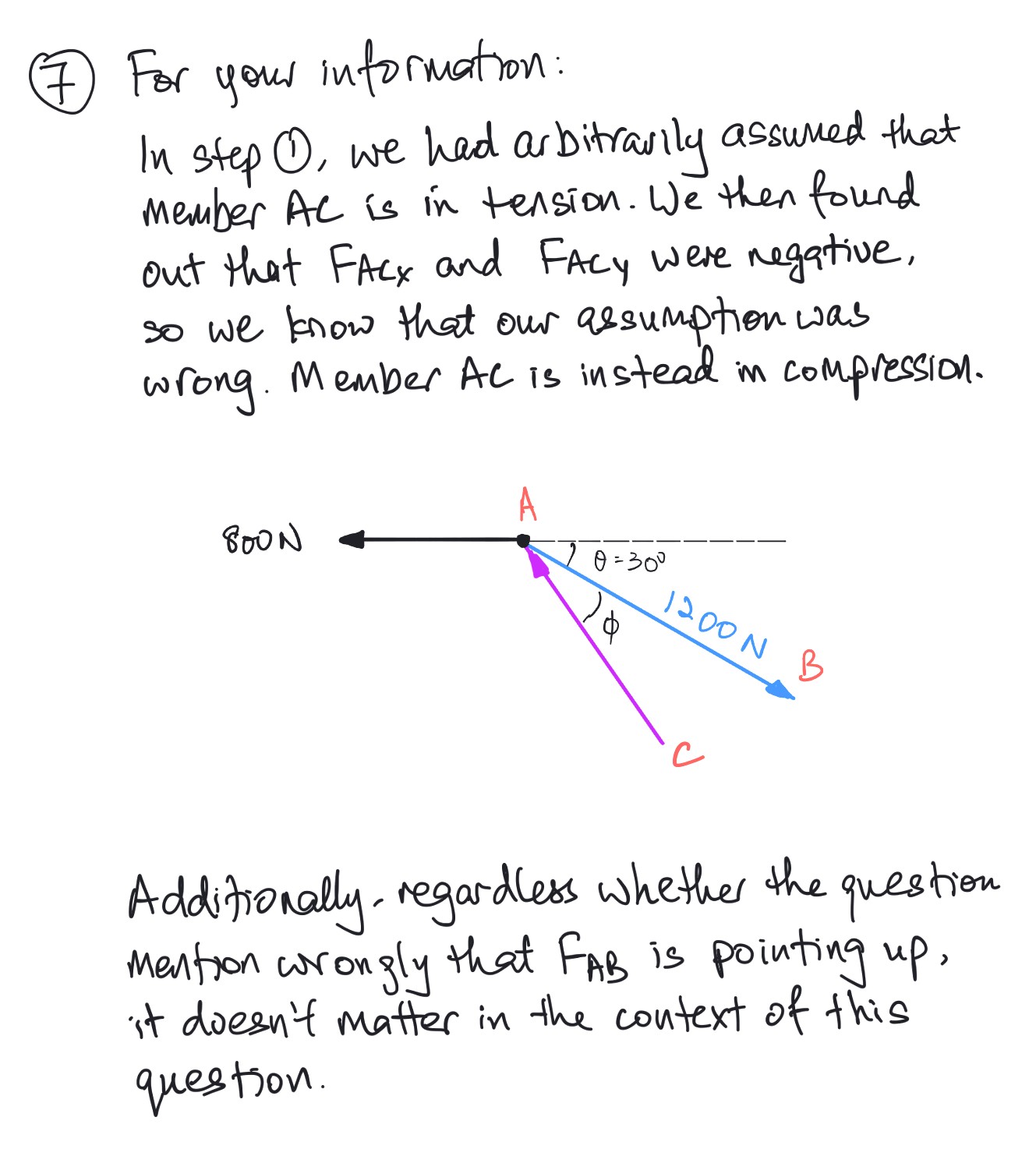Ask Singapore Homework?
Upload a photo of a Singapore homework and someone will email you the solution for free.

See 5 Answers
done
{{ upvoteCount }} Upvotes
clear
{{ downvoteCount * -1 }} Downvotes
Hello Vin, I couldn’t see the question properly. The image is too small. I tried to figure out the numbers as much as I can. Here it goes. Let me know if you need further clarifications.
Date Posted:
4 years ago
Hi bro thanks for the ans bt still not sure abt teh diagram i tot a to b the 1200 shiuld be upward coz its say acts up to the left from b toward a
I am kinda confuse in how to make the diagram how u get the 30 on otherside also
Vin, you can point AB upwards too. We are concerned about the magnitude of the force, not the direction. In this type of question, we treat the magnitude of the force like a distance from point A to B, regardless of where the arrow points to.
Since line AB is parallel to the dashed blue line, the angle would be 30 deg too since theta is 30 degrees.
Also, remember for these types of question, you need to rearrange the force vectors to form a parallelogram followed by a closed triangle making sure all the vectors are connected. After that, you can simply use the sine law or cosine law to determine the force magnitudes.
I do not suggest you to decompose the force into their respective x- and y-component. It will become very messy. However, if you wish, I can work out the same solution using that. I will try to upload a solution using the decomposition method.
Since line AB is parallel to the dashed blue line, the angle would be 30 deg too since theta is 30 degrees.
Also, remember for these types of question, you need to rearrange the force vectors to form a parallelogram followed by a closed triangle making sure all the vectors are connected. After that, you can simply use the sine law or cosine law to determine the force magnitudes.
I do not suggest you to decompose the force into their respective x- and y-component. It will become very messy. However, if you wish, I can work out the same solution using that. I will try to upload a solution using the decomposition method.
Alright thanks for the help I understood the point
done
{{ upvoteCount }} Upvotes
clear
{{ downvoteCount * -1 }} Downvotes
Hello Vin, as promised, I have solved the question by decomposing the forces into their respective x- and y-component. You realise that it is so much lengthier than the initial solution. I leave it to you which method to choose, but I would suggest to use the initial method I proposed (i.e., connect the vectors after forming a parallelogram). Additionally, this method is a “mechanics” way of solving the problem, while the initial proposed solution is a more “mathematics” way of solving the problem. Hope this clarifies your doubt.
This is the first page of the new solution.
This is the first page of the new solution.
Date Posted:
4 years ago
done
{{ upvoteCount }} Upvotes
clear
{{ downvoteCount * -1 }} Downvotes
This is the second page of the new solution.
Date Posted:
4 years ago
done
{{ upvoteCount }} Upvotes
clear
{{ downvoteCount * -1 }} Downvotes
This is the third page of the new solution.
Date Posted:
4 years ago
done
{{ upvoteCount }} Upvotes
clear
{{ downvoteCount * -1 }} Downvotes
This is the last page of the new solution.
You can see that it is really tedious!
You can see that it is really tedious!
Date Posted:
4 years ago









